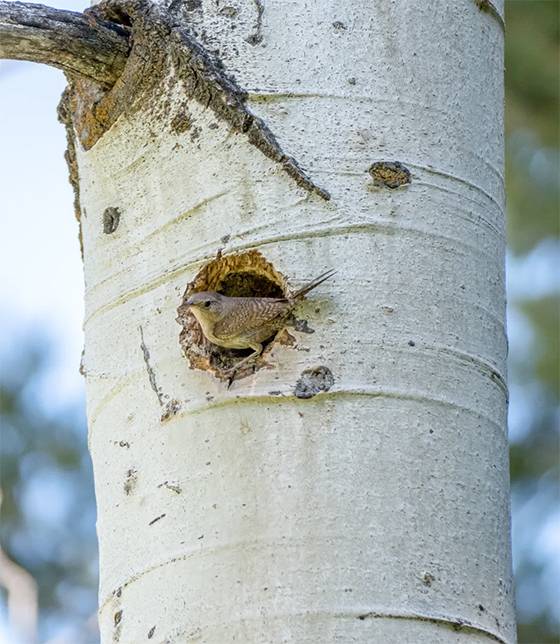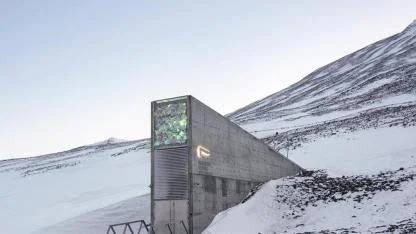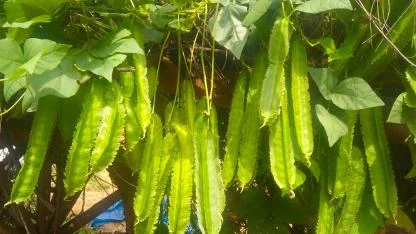Reintroduced wolves are helping baby aspen trees flourish in northern Yellowstone for the first time in 80 years, study suggests
This remarkable comeback is highlighted in a study published in Forest Ecology and Management, where researchers connect the resurgence of aspens to the ecological impacts of reintroducing gray wolves. Once extirpated from the park, wolves have helped rebalance Yellowstone’s food web by reducing elk overpopulation, easing grazing pressure on vulnerable aspen saplings.

The recovery of these trees marks a major milestone in restoration efforts and hints at broader ecological changes now underway across Yellowstone. As scientists continue to track these developments, the story of wolves and aspens provides a powerful example of how apex predators shape landscapes and influence biodiversity.
How wolves disappeared and elk populations surged
Gray wolves were once widespread across Yellowstone, functioning as crucial apex predators. But by the 1930s, relentless hunting, government predator eradication programs, and habitat loss eliminated them entirely from the region. With the wolves gone, Yellowstone’s elk population surged. By winter 1995, about 17,000 elk roamed the park, browsing heavily on grasses, shrubs, and especially young aspen shoots. Ecologists surveying the landscape in the 1990s found no surviving aspen saplings. Although mature trees still stood, their younger replacements were repeatedly eaten before they could grow beyond a few inches.
Why aspens struggled for decades
Aspen stands rely on a cycle of regeneration in which new sprouts replace aging trees. Without this regeneration, entire stands become vulnerable to decline. According to ecologist Luke Painter of Oregon State University, the trees continued to produce shoots, but none survived long enough to become established. The result was a forest of aging trunks with no younger generation rising behind them. By the early 1990s, scientists warned that Yellowstone’s aspens were in danger of disappearing from many parts of the park unless grazing pressure was reduced.
Wolf reintroduction sparks a dramatic ecological shift
In 1995, biologists reintroduced gray wolves to Yellowstone, releasing them into a landscape teeming with elk. Almost immediately, the wolves began to thin elk numbers, both through predation and behavioral changes. Elk became more cautious, moving more frequently and avoiding areas where they were vulnerable. These shifts helped ease grazing pressure on plants long suppressed by heavy browsing. Over the years, elk numbers dropped to roughly 2,000 individuals spending the winter inside the park. With fewer elk stripping saplings, aspen shoots finally had a chance to grow taller and develop into young trees.
New evidence of aspen recovery
The study’s findings provide compelling evidence of ecological recovery. Scientists previously surveyed 87 aspen stands in northern Yellowstone in 2012. When they returned in 2020 and 2021, they found that 43 percent of these stands contained new young trees with trunks at least two inches in diameter at chest height. This level of growth had not been recorded since the 1940s. The team also documented a more than 152-fold increase in aspen sapling density between 1998 and 2021, indicating a sustained and widespread rebound. While many saplings still face natural threats, their increasing size makes them more resilient to browsing and environmental stressors.
Benefits for wildlife and forest health
The return of aspens carries benefits far beyond the trees themselves. Aspen groves support a diverse community of species, including birds, insects, and mammals. Birds such as woodpeckers and tree swallows rely on aspen trunks for nesting cavities, while beavers use aspen bark and branches as food and building material.

As aspen stands recover, they can help stabilize streambanks, increase local biodiversity, and support healthier ecosystems across northern Yellowstone. Because aspens spread through root systems, a single recovering stand can expand over time, restoring habitat that had been diminished for generations.
Is this a true trophic cascade?
Many ecologists view the resurgence of aspens as evidence of a trophic cascade—a chain reaction triggered by changes at the top of the food web. According to Painter, wolf reintroduction has launched a recovery process long suppressed by the absence of apex predators. However, not all scientists fully agree on the extent of this cascade. Some researchers argue that Yellowstone’s ecosystem is still recovering from decades of imbalance, and that wolves were only one factor influencing elk numbers. Human hunting outside park boundaries and predation by grizzly bears have also shaped elk populations. Additionally, growing bison herds introduce new grazing pressures on vegetation.
Why the debate continues
A 2024 study led by ecologist Tom Hobbs suggested that the ecosystem has not yet shown dramatic large-scale changes resulting solely from wolf reintroduction. Hobbs emphasized that when a food web is disrupted for decades, recovery can take generations. The long-term restoration of Yellowstone’s forests, shrubs, and wildlife communities may unfold over the next forty years or more. Despite differing interpretations, most researchers agree that wolves have played a significant role in promoting aspen growth and reshaping ecological dynamics. Continued monitoring will help reveal how the landscape evolves in the coming decades.
What Yellowstone’s aspens reveal about ecosystem recovery
The revival of aspen trees in northern Yellowstone provides a powerful illustration of how predator restoration can influence an entire ecosystem. While the full scale of the trophic cascade is still under scientific debate, the evidence of renewed tree growth is promising. The story of wolves and aspens reminds us that ecological systems are interconnected, complex, and deeply responsive to changes in species populations. As Yellowstone continues to heal from past disruptions, its recovering aspen groves stand as a hopeful sign of nature’s resilience.












Yorumlar
Kalan Karakter: